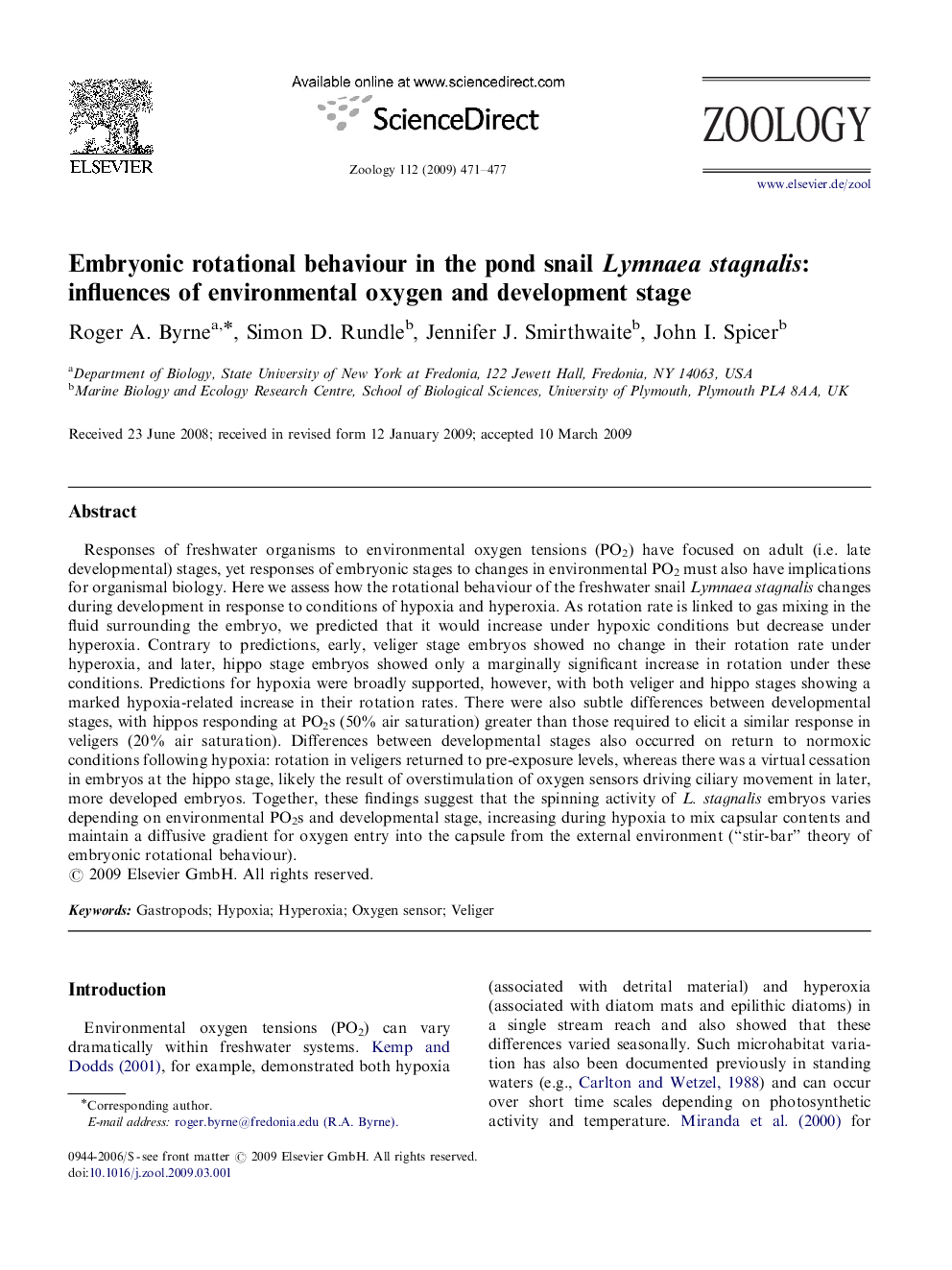| کد مقاله | کد نشریه | سال انتشار | مقاله انگلیسی | نسخه تمام متن |
|---|---|---|---|---|
| 2791223 | 1154857 | 2009 | 7 صفحه PDF | دانلود رایگان |

Responses of freshwater organisms to environmental oxygen tensions (PO2) have focused on adult (i.e. late developmental) stages, yet responses of embryonic stages to changes in environmental PO2 must also have implications for organismal biology. Here we assess how the rotational behaviour of the freshwater snail Lymnaea stagnalis changes during development in response to conditions of hypoxia and hyperoxia. As rotation rate is linked to gas mixing in the fluid surrounding the embryo, we predicted that it would increase under hypoxic conditions but decrease under hyperoxia. Contrary to predictions, early, veliger stage embryos showed no change in their rotation rate under hyperoxia, and later, hippo stage embryos showed only a marginally significant increase in rotation under these conditions. Predictions for hypoxia were broadly supported, however, with both veliger and hippo stages showing a marked hypoxia-related increase in their rotation rates. There were also subtle differences between developmental stages, with hippos responding at PO2s (50% air saturation) greater than those required to elicit a similar response in veligers (20% air saturation). Differences between developmental stages also occurred on return to normoxic conditions following hypoxia: rotation in veligers returned to pre-exposure levels, whereas there was a virtual cessation in embryos at the hippo stage, likely the result of overstimulation of oxygen sensors driving ciliary movement in later, more developed embryos. Together, these findings suggest that the spinning activity of L. stagnalis embryos varies depending on environmental PO2s and developmental stage, increasing during hypoxia to mix capsular contents and maintain a diffusive gradient for oxygen entry into the capsule from the external environment (“stir-bar” theory of embryonic rotational behaviour).
Journal: Zoology - Volume 112, Issue 6, November 2009, Pages 471–477